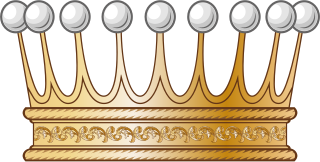
Graf is a historical title of the German nobility and later also of the Russian nobility, usually translated as "count". Considered to be intermediate among noble ranks, the title is often treated as equivalent to the British title of "earl".

Baron Wilhelm von Biela was a German-Austrian military officer and amateur astronomer.

Johann Philipp, Graf von Cobenzl was a statesman of the Habsburg monarchy and the Austrian Empire.
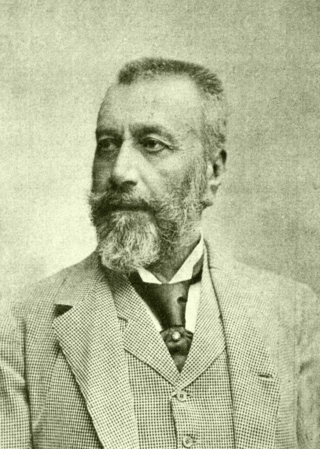
Johann (Hans) Nepomuk Wilczek was an Austrian arctic explorer and patron of the arts. He was the main sponsor of the Austro-Hungarian North Pole Expedition in 1872–74.

The Bibran-Modlau family was a Silesian noble family which was raised to Reichsfreiherr 1624.
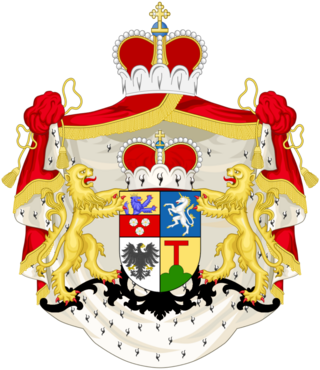
The Henckel von Donnersmarck family is an Austro-German noble family that originated in the former region of Spiš in Upper Hungary. The founder of the family was Henckel de Quintoforo in the 14th century. The original seat of the family was in Donnersmarck, which was then within the Kingdom of Hungary but is now part of Slovakia. The family was ennobled in 1607 by Rudolf II, Holy Roman Emperor. Members of the family were granted other noble titles and privileges in 1636 by Ferdinand II, Holy Roman Emperor, in 1651 by Ferdinand Charles, Archduke of Austria, in 1661 by Leopold I, Holy Roman Emperor, and in 1901 by Wilhelm II, German Emperor. In 1531, the family moved to Silesia. They were expelled from Silesia, along with other German families, in 1945 by the Soviet Army and settled in Germany and Austria.

Maximilian Freiherr von und zu Trauttmansdorff, was an Austrian politician and diplomat of the Thirty Years' War era. His other titles included Freiherr von Gleichenberg, Neuenstadt am Kocher, Negau, Burgau und Totzenbach, Herr zu Teinitz. He was a Knight in the Order of the Golden Fleece, Geheimer Rat, Chancellor and Obersthofmeister.

Cyprian Gualbert Heinrich Graf von Kreutz was a general of the Russian Imperial Army known for his service in the Napoleonic Wars and the November Uprising.

Mathias Franz Graf von Chorinsky Freiherr von Ledske was first Bishop of the Roman Catholic Diocese of Brno, Imperial and Royal senior Privy Counsellor of the Imperial and Royal Privy Council of the Habsburg monarchy and with his equally eminent brothers the first Counts of Chorinsky.
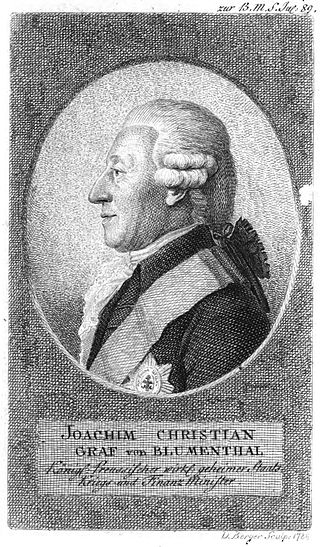
Joachim Christian, Count von Blumenthal succeeded his uncle Ludwig von Blumenthal as President of the Prussian General War and Finance Directory of Prussia and remained so until the time of the Napoleonic Wars.

The Manndorff zu Pfannhofen und Wissenau family is an ancient Austrian noble family, more specifically the Uradel. They are among the oldest Carinthian noble families still in existence today.
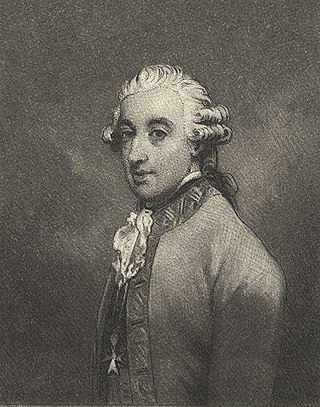
Ludovico Luigi Carlo Maria di Barbiano di Belgiojoso or Ludwig Karl Maria von Barbiano Graf von Belgiojoso was an Austrian diplomat and Lieutenant Field Marshal who served the Habsburg monarchy in the second half of the 18th century.
Ernst Heinrich Kneschke was a German heraldist, ophthalmologist and writer.

The House of Egloffstein is an ancient Franconian aristocratic family (Uradel) with an eponymous family home in the hill region of Franconian Switzerland in the Bavarian province of Upper Franconia. The family first appears in the records in 1187 with a Heinrich genannt Stuchs who is also the progenitor. The house belongs to the brotherhood of Franconian Imperial Knights. Egloffstein Castle and Kunreuth Castle are to this day owned by the family.
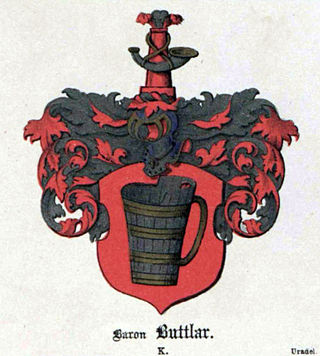
The Buttlar family is the name of an old Upper Franconian-Hessian noble family. The lords of Buttlar originate from the ancient nobility of Buchonia. Branches of the family also reached Westphalia, Saxony, Prussia, Curonia, France, Poland, Russia and Hungary, and remain partly to this day. The Buttlar and Treusch von Buttlar families of Hessen has since 1660 belonged to the Old Hessian Knighthood, the oldest foundation in Hessen.

Count Anton Pace, Baron of Friedensberg was an Austrian aristocrat, politician, senior government official, and Imperial and Royal Privy Councilman. He served as the President of Bukovina and later as a life member of the Imperial Council of Austria-Hungary.

Alexander von Koller was an Austro-Hungarian military officer, who achieved the rank of General of the cavalry and served as Imperial and Royal Minister of War from 1874 to 1876.

Count Erwin Franz Ludwig Bernhard Ernst von Neipperg was an Austrian General of the Cavalry of Württembergian descent who was notable for being the main commander at the Battle of Aschaffenburg.
William Maurice II of Isenburg-Philippseich ; was a lieutenant General of the Electorate of Palatinate and the first ruler of the County of Isenburg-Philippseich.

















